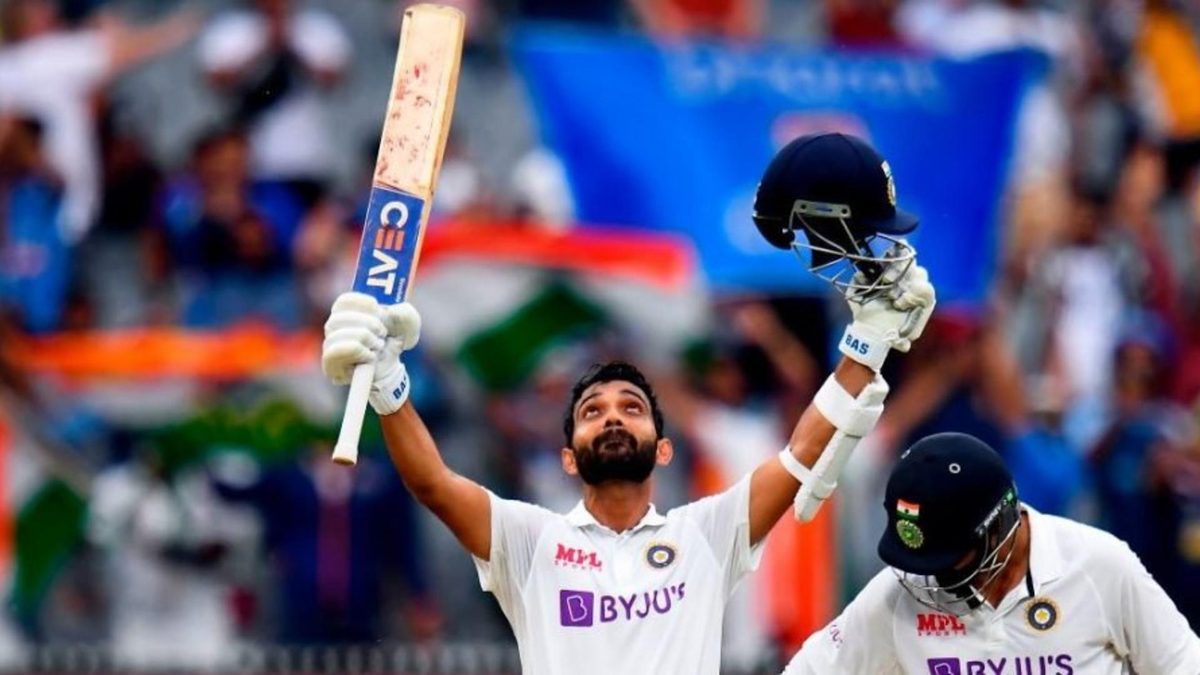
Ajinkya Rahane has often been on the receiving end of criticism for his inconsistent showing in India’s Test kit. But he’s still an essential component of India’s batting, especially on tours abroad, writes Sarah Waris.
Subscribe to the Wisden Cricket YouTube channel for post-match awards, player interviews, analysis and much more.
Consistency — steadiness, dependability or regularity — could be a much-hyped term in the cricketing world. How do you define the term “consistency”? Is it the ability to score runs and runs and then some more runs against the best bowlers across all conditions day in and day out? Or is it the knack for bouncing back from an indifferent run almost always when the team needs you?
Though the former is practically not feasible, expectations for the same never cease to end. Such is the fanaticism that a player of Ajinkya Rahane’s calibre is often questioned, with doubts being raised over his place in the Test team despite his contributions that have played a huge role in Team India’s Test run in the last few seasons.
The middle-order batsman from India has played 73 Test matches, batted in 123 innings, and has scored 4,583 runs at an average of 41.28. He has 12 hundreds and 23 fifties since his first Test in 2013. He is the 11th highest run-scorer in the world since his debut in the format, having played 27 games less than the top-scorer Joe Root. He has the eighth-best average among players with more than 4,500 runs in this interim and only eight players have scored more centuries than him.
And yet, Rahane’s name is the first to pop up whenever there are talks around making changes to the Indian playing XI. He has non-century phases far too often, he is not the most reliable, and the team can ill-afford to have a player who is not “consistent” with many youngsters ready to grab onto their opportunities.
The debates are not without reason, though. Since the World Test Championship cycle started, Rahane has scored less than 30 on 16 occasions in 28 innings. He has scored between 30 and 50 three times, effectively meaning he has not scored a fifty in 19 of his 28 innings (68 per cent). Even the number of hundreds he has – three since India played their first game in the ongoing event – is not the most for the team.
Should he be dropped then, with a newer face ready to replace him?
Maybe not. Rahane, with 1,095 runs in the World Test Championship is the highest run-scorer for India – and ninth-highest overall. He is just two short of Marnus Labuschagne’s five Test tons in this period and has the third-highest number of fifties too. All of his three Test centuries have come in wins, and more importantly, all of his fifties too.
But it is not just the runs he has scored, but the manner in which he has scored them that counts and re-emphasises how indispensable he has been to the side.
His 81 at Antigua helped India recover from 25-3 to 297 after a fiery Kemar Roach had befuddled the top-order. He returned to score a fine 102 in the second innings to help India over the line. In the next game, he top-scored with an unbeaten 64 as India went for the kill. He was the saviour yet again in the third Test against South Africa at Ranchi after India collapsed to 39-3, scoring a brisk 115 off 192 alongside Rohit Sharma.
At Adelaide, in the Pink Ball Test, Rahane conquered the tough conditions to score 42 with skipper Virat Kohli after the team had lost their talisman Cheteshwar Pujara. Though India went on to lose the game after another ‘45 minutes of bad cricket’, the foundation had been laid, and Rahane’s role could not be ignored.
Even if that knock was forgotten, what never will be is his 112 at the Boxing Day Test match – an innings that turned the series, and the Championship around. It was a knock of pure technical mastery and class, but more importantly, it was a knock that proved the never-say-die attitude of the Indians. Sprinting back from the lows of “36 all-out” without stalwarts Kohli and Mohammad Shami, Rahane’s hundred as skipper reinforced the might of the players in the Indian camp.
Over the seasons, the batsman has found ways to answer his critics in fine fashion, be it with his century at Lord’s in 2014, or his underrated innings of 96 at Durban in 2013, 57 at Durban in 2013 or his 81 against Australia in Brisbane a year later. He scored a match-winning 48 at Johannesburg in 2018 after India were struggling at 57 for 3 and helped his team inflict a massive 203-run defeat against England with a counter-attacking 81 at Nottingham a few months later. On England’s tricky terrains, when batting line-ups often collapse like a pack of cards, Rahane’s adaptability would be essential to India’s chances.
Rahane might not be a cricketer whose batting you fall in love with at first glance. He might not be the most popular role model for young players: he lacks the panache of Kohli or the steadiness of Pujara. He steers clear of controversy and is hardly in the news. India’s batting now features the promise of a young Shubman Gill, the elegance of Rohit and the chutzpah of Rishabh Pant; Rahane is often overlooked amongst them, but if Team India is in the deepest of trouble, you know he will invariably step up.








